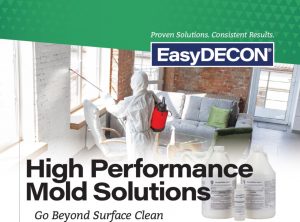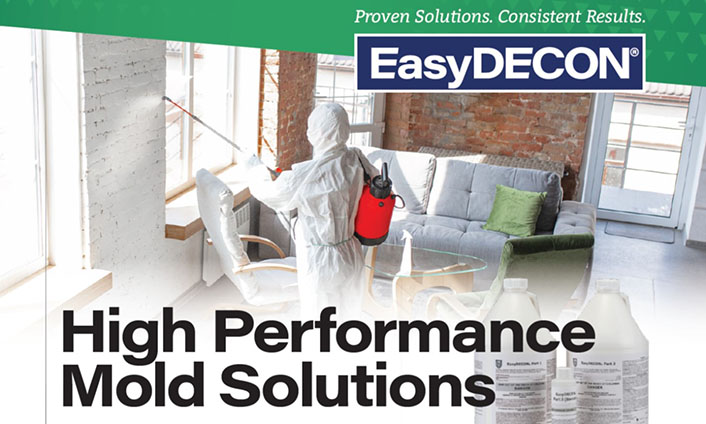 Mold feeds on dirt and dust, and because of this it is practically impossible to eradicate it from a home or building. According to the EPA, if damp or wet building materials or furnishings are not cleaned and dried within 24 to 48 hours, the moisture can lead to mold growth. Additionally, mold is often an invisible problem since it is not limited to occurring on surfaces and is easy to be unaware of until you or a loved one gets sick. When present in large quantities, all molds are allergenic and potentially harmful. Here are some guidelines to follow should you suspect or become aware of a mold problem.
Mold feeds on dirt and dust, and because of this it is practically impossible to eradicate it from a home or building. According to the EPA, if damp or wet building materials or furnishings are not cleaned and dried within 24 to 48 hours, the moisture can lead to mold growth. Additionally, mold is often an invisible problem since it is not limited to occurring on surfaces and is easy to be unaware of until you or a loved one gets sick. When present in large quantities, all molds are allergenic and potentially harmful. Here are some guidelines to follow should you suspect or become aware of a mold problem.
- Water and moisture exacerbate any mold problem.
Check for leaks in such places as the bathroom, roof, or crack in the building’s foundation. Removal of the introduction of water and moisture is key to ensuring that once the mold is gone it will be less likely to return. Once remediation is complete, it is important to remain diligent in keeping areas of your home dry. Repair plumbing leaks as soon as possible, follow the inspection and maintenance schedule of your HVAC system and keep their drip pans clean and unobstructed. Do your best to keep indoor humidity below 45%.
- Know what works and what does not.
Using corrosive substances like bleach on surfaces contaminated by mold is often identified as a ‘spray and pray’ approach, and with good reason. The EPA advises against the use of bleach for a variety of reasons, namely that bleach fumes can be dangerous, and it is frequently ineffective.
Another methodology the EPA cautions against is DIY remediation if there is more than 10 square feet of mold to be eradicated. Home tests for surface and airborne mold are seldom reliable and can be close to impossible to decipher by the lay person. That said, it is important that a reputable remediator is used to solve the problem. Make sure that the company you choose has the expertise and experience necessary to execute the job successfully and uses effective and proven mold remediation formulas to do so.
- Act quickly.
Once you have ascertained that you have a mold problem, look for a remediation company that uses EasyDECON® DF200 as part of their cleaning and decontamination protocol. Cleaning helps prevent the forming of biofilms, but decontamination is required to destroy the bacteria and prevent future growth.
Mold spores are notoriously difficult to kill and control, but they are no match for EasyDECON. This proprietary formula breaks down the tough lipid layer of the mold spores destroying the DNA.

